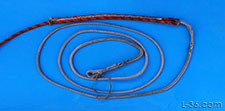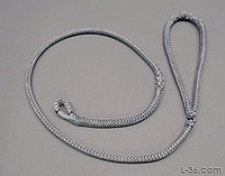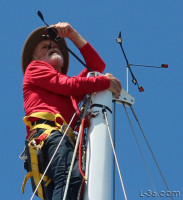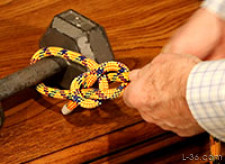Articles
-
Or select from the following categories:
- Unassisted Mast Climbing
- Line and Rigging
- Boat Maintaince
- Electrical and DIY
- Navigation
- Miscellaneous
- Racing
- Interesting Wood Boat Repairs
- L-36 specific articles
- Startline Articles (Obsolete)
Complete index of all articles
Here are the newest and favorite articles
Seven Great Boating Tools

View Article
Soft Shackle Ultra-lite sheets

In most of the time I owned Papoose, if the wind got below 5 knots the boat would just sit there and turn usually backing to the wind. Now I have a free flying light air jib, a spinnaker and thses sheets, sailing in 5 knots of wind is my favorite sailing condition.
View Article
Soft Shackle Y-sheets

View Article
Ultimate Unassisted Mast Climbing (Updated 4/5/2024)

I have tried dozens of way to climb my mast. In the process I have accumulated 7 ascenders, three rappel devices, a GriGir, and numerous carabiners. I think this climbing system is the best. It is simple to rig, quick going up, requires very little to transition from up to down, and very fast and controlled going down. I can get down in 2 1/2 minutes including rigging the rappel device.
The article starts with a short (4 1/2 minute) video that gives an overview. Start there.
View Article
My Youtube Channel
View Article
A Better Soft Shackle
My "Better Soft Shackle" has become the standard in soft shackle design along with the stronger soft shackle. I invented this version several yeas ago and was co inventor of the stronger soft shackle along with the late Brion Toss and Evans Starzinger. Of the two versions, I prefer this one. It is easier to tie and easier to use. If I want a stronger shackle, I start with stronger line. For example, the stronger soft shackle is 35% stronger but going up one line size gains 60% in strength. All things considered, I believe this is the superior version.
The original soft shackle is rather difficult to open and to milk closed. With age, it becomes increasingly difficult. The alternative Kohlhoff style is easy to use, but it sacrifices some security. This version incorporates the best properties of both of these versions. The eye is easy to open but can only be opened just enough to fit the stopper knot through it. Almost any slight force will close it quickly.

View Article
How to Tie a Bowline (fast and easy)

View Article
NOTICE: Some pages have affiliate links to Amazon. As an Amazon Associate, I earn from qualifying purchases. Please read website Cookie, Privacy, and Disclamers by clicking HERE. To contact me click HERE. For my YouTube page click HERE